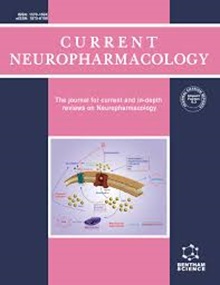缓解阿尔茨海默病线粒体功能障碍的药物靶点:最新进展和治疗意义
IF 4.8
2区 医学
Q1 NEUROSCIENCES
引用次数: 0
摘要
:阿尔茨海默病(AD)是一种严重的进行性神经退行性疾病,与神经元损伤和认知功能减退有关,主要影响全球老年人。虽然越来越多的证据表明线粒体功能障碍是导致阿尔茨海默病的最重要因素之一,但其准确的病理生物学原理仍不清楚。线粒体的生物能和平衡在 AD 发病过程中受到损害并出现缺陷。然而,编码线粒体成分的核DNA或线粒体DNA发生突变可能会导致线粒体功能障碍,因为线粒体功能障碍是AD早期阶段常见的细胞内过程之一。此外,电子传递链功能障碍和线粒体病理蛋白相互作用也与 AD 的线粒体功能障碍有关。线粒体的许多参数在衰老过程中会下降,导致活性氧(ROS)产生失衡,从而导致老年 AD 中的氧化应激。此外,神经炎症也是AD相关线粒体功能障碍的另一个潜在致病因素。虽然针对线粒体功能障碍的几种治疗方法已进行了临床前研究,但在临床试验中取得成功的却寥寥无几。因此,本综述讨论了纠正 AD 线粒体功能障碍的分子机制和不同的治疗方法,这有可能推动基于药物的新型 AD 干预疗法的未来发展。本文章由计算机程序翻译,如有差异,请以英文原文为准。
Drug Target to Alleviate Mitochondrial Dysfunctions in Alzheimer’s Disease: Recent Advances and Therapeutic Implications
: Alzheimer's disease (AD) is a severe progressive neurodegenerative condition associated with neuronal damage and reduced cognitive function that primarily affects the aged worldwide. While there is increasing evidence suggesting that mitochondrial dysfunction is one of the most significant factors contributing to AD, its accurate pathobiology remains unclear. Mitochondrial bioenergetics and homeostasis are impaired and defected during AD pathogenesis. However, the potential of mutations in nuclear or mitochondrial DNA encoding mitochondrial constituents to cause mitochondrial dysfunction has been considered since it is one of the intracellular processes commonly compromised in early AD stages. Additionally, electron transport chain dysfunction and mitochondrial pathological protein interactions are related to mitochondrial dysfunction in AD. Many mitochondrial parameters decline during aging, causing an imbalance in reactive oxygen species (ROS) production, leading to oxidative stress in age-related AD. Moreover, neuroinflammation is another potential causative factor in AD-associated mitochondrial dysfunction. While several treatments targeting mitochondrial dysfunction have undergone preclinical studies, few have been successful in clinical trials. Therefore, this review discusses the molecular mechanisms and different therapeutic approaches for correcting mitochondrial dysfunction in AD, which have the potential to advance the future development of novel drug-based AD interventions.
求助全文
通过发布文献求助,成功后即可免费获取论文全文。
去求助
来源期刊

Current Neuropharmacology
医学-神经科学
CiteScore
8.70
自引率
1.90%
发文量
369
审稿时长
>12 weeks
期刊介绍:
Current Neuropharmacology aims to provide current, comprehensive/mini reviews and guest edited issues of all areas of neuropharmacology and related matters of neuroscience. The reviews cover the fields of molecular, cellular, and systems/behavioural aspects of neuropharmacology and neuroscience.
The journal serves as a comprehensive, multidisciplinary expert forum for neuropharmacologists and neuroscientists.
 求助内容:
求助内容: 应助结果提醒方式:
应助结果提醒方式:


